We are now on the penultimate day of October, a month that whirred by so fast the leaves have fallen off the trees. In Ten-Code, 10-30 could also mean “Use Caution” or “Illegal Use of the Radio” which could also be an apt description of Charlottesville Community Engagement.
This is the 593rd edition of a newsletter and podcast that also does not seem to conform to any rules or regulations of contemporary journalism. I’m Sean Tubbs, determined to proceed independently.
On this edition:
An on-demand microtransit service has launched a one-year pilot in Albemarle County
The city needs more information before it can approve a site plan for 130 townhouse units in Belmont
The Charlottesville Planning Commission recommended approval of a new zoning ordinance earlier this month after deliberating about two new additions made since the public hearing in mid-September
First-shout out: Rivanna Conservation Alliance has successful round-up
In today’s first Patreon-fueled shout-out: This year, the Rivanna Conservation Alliance had a large number of community volunteers take part in the Rivanna River Round-Up. On September 16, 270 people joined in to help clean up over 28 miles of river and trail. They collected over 202 bags of trash. Take a look at the photo gallery on their website and while you’re there:
All of that is accessible at https://www.rivannariver.org/
Microtransit project launches in Albemarle County
The director of Charlottesville Area Transit said earlier today that this is a good day for alternatives to driving a single-occupant vehicle.
“Today is a wonderful day for public transportation,” said Garland Williams. “Today, CAT officially launches a new mobility option, a new tool in our toolbox.”
That tool is MicroCAT, an on-demand public transportation service that will feature four vehicles covering the Places29-North area and one covering the Pantops area. CAT has hired the firm Via to provide the software, vehicles, and drivers for the service which will operate for at least the next twelve months.
The idea stems from a series of previous plans intended to provide more options for people to get around the community. Williams said MicroCAT is intended to provide well-known service gaps.
“When properly designed and executed, flexible on-demand services like MicroCAT can eliminate transit deserts, create first and last mile connections, and can be the catalyst to get people out of their automobiles,” Williams said.

To use the fare free service, download the MicroCAT app from the Android or Apple IOS system. Or you can call 434-442-2466 to book a ride. The service operates Monday through Saturday from 6:30 a.m. to 9:30 p.m.
The majority of the funding for the one-year pilot comes from a $1.5 million grant from the Virginia Department of Rail and Public Transportation. The agency has been funding similar initiatives across the Commonwealth.
“We’re using microtransit around the state to close transportation gaps, to provide freedom for people to move throughout their community and access jobs, education, healthcare, and other essential services,” said Jennifer Debruhl, the director of DRPT. “We’re truly seeing microtransit and programs like MicroCAT change people’s lives.”
Albemarle County is paying just under $400,000 for one year of the service which is intended to meet strategic initiatives.
“MicroCAT, this new low emission pilot program, will improve public options in Albemarle County with technology to expand access to flexible, equitable, and sustainable transportation,” said Supervisor Chair Donna Price. “The expansion of environmentally beneficial transportation in Albemarle County is crucial for reducing pollution, mitigating climate change, and improving the well-being of our residents, workers, and visitors
Albemarle County’s urban ring is about 30 square miles compared to just over 10 for the entire City of Charlottesville. Price said that’s too large an area to expand fixed-route transit across but the on-demand MicroCAT is seen as a step in that direction.
“The county’s Pantops and U.S. 29 North areas do have sufficient increased density which while too small to support that fixed-route system, but is sufficient to support this on-demand service,” Price said.
The drivers and vehicles as well as the software that powers the on-demand journey all come from the firm VIA, which has deployed the technology all around the United States.
“It’s so simple once you’ve signed up,” said Aparna Paladugu, the director of policy and government affairs at Via. “All you do is enter your origin, your destination and then you’re on our way. We have wheelchair accessible vehicles in the fleet for those who need it. Accessibility is key and core to what we do.”
Paladugu said the software’s matches passengers with drivers who may be heading in that direction anyway. Unlike Uber or Lyft, passengers will share vehicles with each other.
“Our algorithms pair riders together who are headed in the same direction and we direct each rider to a virtual bus stop which is a short walk away from where you request your ride,” Paladugu said. “This makes for a very efficient shared-ride service.”
After a ribbon-cutting, reporters were able to go on a quick ride-along. Driver Peter Lafford was keen to show off the Toyota Sienna he was driving.
“I’m an independent contractor like a rideshare driver for Via and they have me get this vehicle from them to drive on the shifts that they assign me via the app and it directs me to which zone they want to send me me to, either Pantops or the 29 corridor,” Lafford said. “I might end up at the Fashion Square Mall at the side of Belk where the bus routes come and probably by the time I get up there there will be a ride assigned to me to pick somebody up on the way and take them to the bus stop to get on the regular route to carry on. They can get on a bus to get downtown, do their shopping, do an errand, whatever. They can take a bus back to the same location and then on the app they could take a Microcat ride back to their home, you know. That last mile.”
Albemarle Supervisors will further discuss transit at their meeting on Wednesday when they review two transit studies.
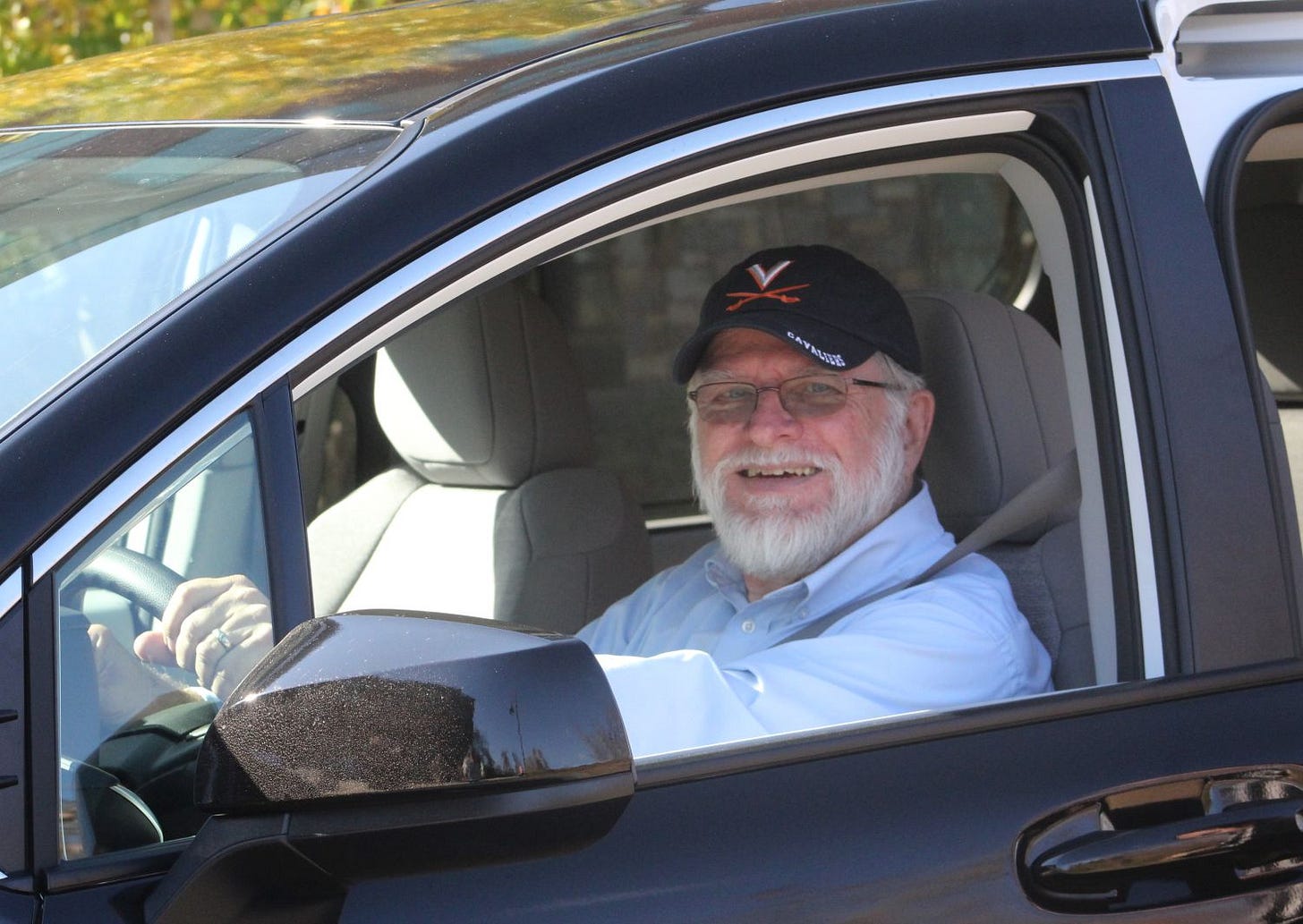
Charlottesville staff issue another denial for Belmont Condominiums plan
When Charlottesville adopts a new Development Code that mostly eliminates the role the City Council plays in making land use decisions, that does not mean projects will go through the planning process without scrutiny.
However, staff in the city’s Department of Neighborhood Development Services may find themselves with more public scrutiny on their review of site plans to see if they conform with a set of clear standards.
To get a glimpse into a future where all parcels of land have more development rights, here’s an example of what’s happening now with property up zoned 20 years ago in the last citywide rezoning.
Riverbend Development has filed a plan to build a 130-unit townhouse complex on land in Belmont currently zoned Neighborhood Commercial Corridor, which means no special use permit is needed though a critical slopes waiver was granted by City Council last fall. There was a site plan conference in May 2022 that I wrote about at the time.
About a month ago, I checked in with the company to see if the project was still proceeding after noticing a couple of pending demolition permits on Carlton Avenue. This was for research for a story I wrote for C-Ville Weekly.
“We are just wrapping things up for final approval,” said Riverbend Vice President of Development Ashley Davies in an October 3, 2023 email. “We will be moving forward with the site plan and current zoning.”
Two weeks later, city staff issued a denial of the fourth version of the site plan. (view the comment letter)
“City Staff have made a good faith effort to identify all deficiencies within this submission,” reads the formal notice.
The issue appears to be minor.
“The only substantive issue appears to be working out the separation between the required trees and the utilities,” said James Freas, the city’s director of Neighborhood Development Services.
I’ve asked Riverbend what they plan to do next, and will update this story before it gets archived to Information Charlottesville.
Second shout-out: Design Develop
In today’s second Patreon-fueled shout-out, architectural firm Design Develop wants you to know about a new service aimed at the development community that may not be widely known yet — 3D point cloud scanning! That’s a technique that uses specialized equipment, such as 3D scanner systems, to gather a large amount of data points that represent the surface of the scanned object or scene.
The applications of 3D point cloud scanning are extensive and cover various fields, including architecture, construction, cultural heritage preservation, virtual reality, industrial design, manufacturing, and more. These applications require accurate 3D spatial information, and Design Develop’s workflow provides precise and comprehensive results, all while being more cost-effective than traditional methods.
Design Develop has expertise in this workflow for their own needs and now has a dedicated team offering this service in the Charlottesville and Albemarle Area. If you're involved in the real estate, design, or construction industry, feel free to contact us for more information or a free quote.
Visit their website for an introductory video that captures the 3D point cloud scanning of the Downtown Transit Center and a booklet that will explain more!
Let the Development Code catch-up commence!
This is the first newsletter back since a break I took to see family in Pennsylvania. There’s a lot to go through and this particular edition makes an attempt to get us all caught up on the latest with the Development Code. One spoiler: City Council has set December 5 as the date for its public hearing. More on that in the next edition of the newsletter.
Planning Commission recommends Development Code, setting stage for City Council public hearing on December 5
After several sessions following the September 14 public hearing, the Charlottesville Planning Commission has recommended a Development Code that will usher in a new era for the city’s built environment.
Their final work session on October 18 was about three hours long and contained a lot of wordsmithing and adjustments of various parameters for the new Residential Core Neighborhood A District. This was added after the public hearing at the insistence of housing groups who want to implement an aspect of the Future Land Use Map intended to help prevent displacement. (view meeting materials)
For more information on the concept, go back and read my story “Charlottesville City Council pitched on restoration of “anti-displacement zones” which summarizes the elected body’s discussion from October 3.
At one point, outside legal counsel Sharon Pandak had this observation about the discussion she was hearing about details that were changing on the fly as the six Commissioners deliberated.
“This is going to be amazing micromanaging and not developing general standards,” Pandak said.
Not developing general standards could open the city to legal challenges in the future.
Commissioner Carl Schwarz was skeptical of the concept of allowing households in the areas to be designated RN-A to have fewer development rights than everyone else.
“People who have lived in the neighborhood forever, born in the 50’s who have lived their entire lives and they’ve got a dwelling that is their personal wealth,” Schwarz said. “Are we cutting out that personal wealth by doing this?”
Schwarz said there are many families whose children have already left who don’t want to return.
“But that house is their inheritance,” Schwarz said. “Are we hurting those people through this?”
Commissioner Phil d’Oronzio is a member of the Housing Advisory Committee, a group whose members otherwise consist of leaders of nonprofit housing groups and an employee of the Charlottesville Redevelopment and Housing Authority. He said that potential wealth is not as important as attempting to prevent displacement.
“We seem to have a pretty loud and clear signal that neighborhood preservation [and] housing preservation without developer invasion is heavily weighted against value,” d’Oronzio said. “Secondly, I mean you still have plenty of value there. You can sell that and have somebody come in and build a single family residence.”
Schwarz asked d’Oronzio who was coordinating that information.
“The provenance is Joy Johnson and Emily Dreyfus,” d’Oronzio said.
Johnson is a resident of Westhaven and the Section 3 coordinator for CRHA. Dreyfus is a political organizer with the Legal Aid Justice Center. Both are members of the Cville Plans Together steering committee, with Dreyfus representing a group called the Charlottesville Low-Income Housing Coalition and Johnson representing CRHA.
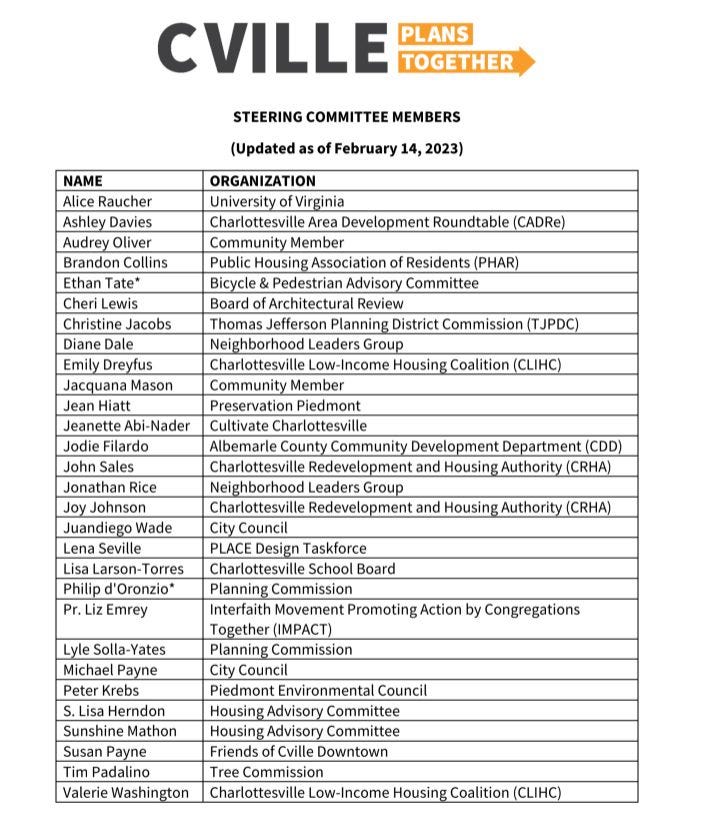
The Legal Aid Justice Center website stores two reports from the coalition that sought to influence the outcome of the Cville Plans Together initiative:
The Impact of Racism on Affordable Housing, February 2020
Why Building More Market-Rate Housing Will Not Solve Charlottesville’s Housing Crisis, April 2021
Commissioner Lyle Solla-Yates is a resident of the 10th and Page neighborhood, one of the areas that would be designated as RN-A.
“I’ve talked to some of my neighbors who live in this area and asked them ‘is this what you want?’” Solla-Yates said. “Quoting my neighbor Bumblebee, ‘my property value is mine. Don’t take it.’ Everyone has said no, they don’t want this.”
Schwarz said many in the same neighborhood are uncomfortable with the whole process.
“It’s new and different and scary with the idea that someone could build multiple units there in a backyard,” Schwarz said. “It’s scary but that’s the same fear that the whole town’s got.”
d’Oronzio discounted these points of view and said he was willing to take a leap of faith on the RN-A district as a short-term measure.
“The plural of anecdote is anecdotes, not data,” d’Oronzio said. “I am viewing RN-A as a, I don’t want to say stopgap, but a zoning district that is designed to give us breathing space to do the small area plans and to provide that protection.”
“I guess my biggest problem with it is that it seems like we are doing something to do something and the question is will this actually stop displacement or flipping?” said Commissioner Rory Stolzenberg.
Stolzenberg said he did not think the RN-A district would do anything to stop the well-documented behavior of knowledgeable individuals or entities purchasing properties for less than they are worth and converting them into properties that sell in the half-million dollar range.
“And then they are flipping them largely within the existing building envelope into well over median houses and nothing we do here is going to prohibit that, nothing is going to make that harder,” Stolzenberg said.
Commission Chair Hosea Mitchell sought to move the conversation along with the assumption that City Council wanted a district like RN-A. He steered the discussion toward some changes that Commissioner Stolzenberg wanted to suggest. Essentially, he would allow a property owner to have two additional units on site by-right if the existing structure is kept.
“So it’s a little bit less restrictive than the currently proposed RN-A which makes me feel a little bit better about the moral ambiguity here,” Stolzenberg said.
At this point, Mitchell was ready to send on a recommendation to Council. More on that in a moment.
The six Commissioners also touched upon the Core Neighborhoods Corridor Overlay District which covers sections of Preston Avenue and Cherry Avenue. These areas would now have slightly less by-right potential than other corridors, but developers and property owners could apply for a special exception permit that would be given if certain criteria are met. (See also: Planning Commission learns of plan to treat Preston Avenue differently in new zoning code, October 15, 2023)
Commissioner Lyle Solla-Yates sought to change the name of the permit and its purpose and cited the specific code.
“2.9.6-C, Special Exception Permit to be Public Benefit Bonus,” Solla-Yates said.
“So instead of Special Exception Permit, you want to call it a public benefit bonus?” asked Commissioner Rory Stolzenberg.
“Yes,” Solla-Yates said.
Specifically, Solla-Yates wanted to take away the ability of City Council to make a decision on whether such a permit should be granted. He said these should be handled like the other affordability bonuses that pervade the entire draft Development Code .
James Freas, the city’s director of Neighborhood Development Services, said he was concerned about making that change.
“The thing I’m concerned about is that we provide bonuses for the affordable dwelling units but the standards to get that bonus are very, very clear,” Freas said. “These are not.”
Commissioner Rory Stolzenberg raised a point about the entire point of the Cville Plans Together initiative.
“I mean I would argue that this entire thing since long before I was around in 2017 was about making for predictable, non-discretionary processes to have a zoning code that is not based on arbitrary decisions made by Council on an ad hoc basis,” Stolzenberg said.
Commissioner Karim Habbab agreed with Stolzenberg’s point but felt the overlay district would support some of the equity goals of the initiative.
“It does offer a seat to Fifeville and 10th and Page to advocate for what they want in these areas and that is the only way,” Habbab said. “If we don’t have a special exception, there’s no mechanism for the community to have that voice.”
Freas said another way would be community involvement in the small area plans that are to be created for each of what are no longer called “sensitive” communities.
The Commission reached consensus on keeping the discretionary review in but tweaked some of the criteria. I’ll have more details on their alterations in a future edition of the newsletter when they were summarized for Council at their October 25, 2023 work session.
Before the vote, Commissioners stated their real estate holdings in the city.
Hosea Mitchell said he owns two condominium units in Belmont and he lives in both of them.
Karim Habbab owns no property.
Phil d’Oronzio said he owns a house in Belmont and his mortgage company is based in Charlottesville.
Carl Schwarz owns a single-family home in 10th and Page and is employed as an architect.
Lyla Solla-Yates a small house in 10th and Page.
Rory Stolzenberg owns a house in the Locust Grove neighborhood.
A seventh position has been vacant since June. Read more about that.
Reading material:
County Attorney’s Office in turmoil, Tammy Purcell, Engage Louisa, October 23, 2023
End notes for #593
There’s a lot happening in this first edition back since a vacation to Pennsylvania, a vacation in which I pretty much worked every day anyway. Someone asked me today if I take time off, and the answer is yes. I just can’t prove it yet.
I can prove I notify readers and listeners of what I’m planning on my Notes section of Substack. Follow along there to keep up as its the best place for me to communicate the schedule. I’m hoping for one more in October before beginning the last sixth of 2023.
This is supported by paid subscribers, and if you’ve not already I’ll remind you that the more paid subscribers I have, the more I can stand behind the title “independent journalist” as I do not seek grant funding but nonprofits and for profits alike are welcome to contact me about sponsorship opportunities.
Ting is a major sponsor of Charlottesville Community Engagement and they’ll match your initial payment through Substack. That could be a $5 a month subscription, a $50 a year subscription, or a $200 a year subscription.
Ting supports a lot of great work and great spaces here, and if you’re in the market for high-speed Internet, give them a try!
Maybe you’re in the market for a new high speed internet provider? If so, check out Ting! If you sign up for Ting at this link and enter the promo code COMMUNITY, you’ll get:
Free installation
A second month for free
A $75 gift card to the Downtown Mall

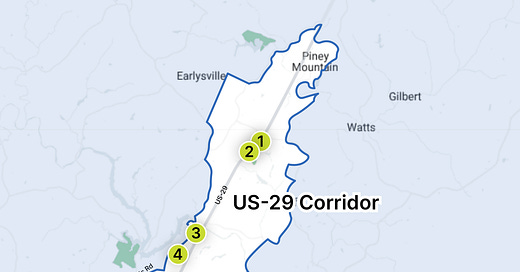






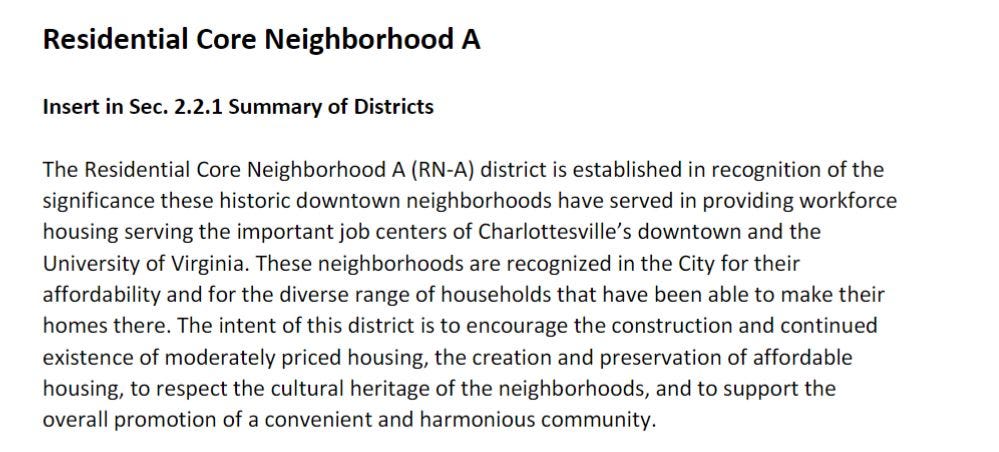
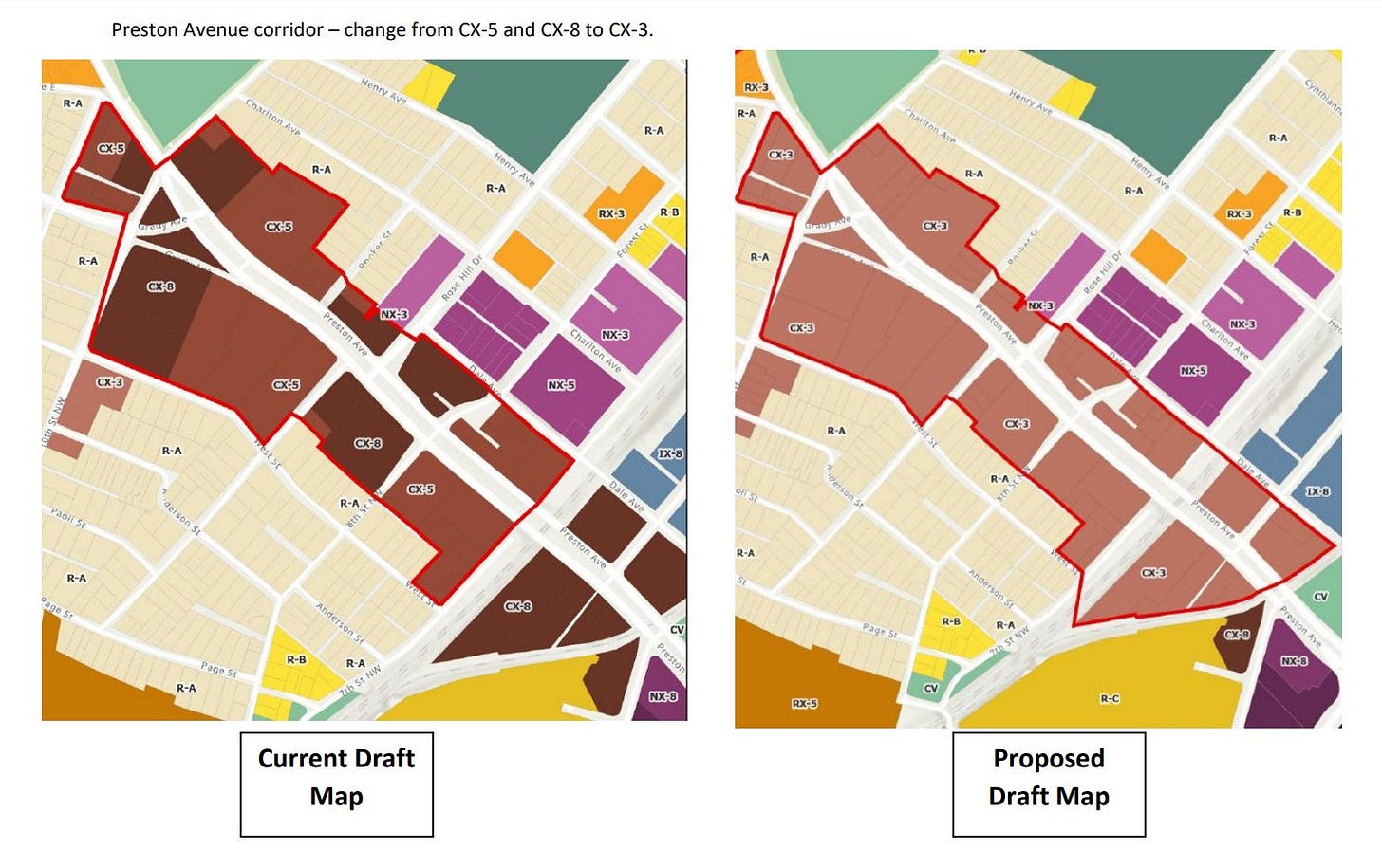










Share this post